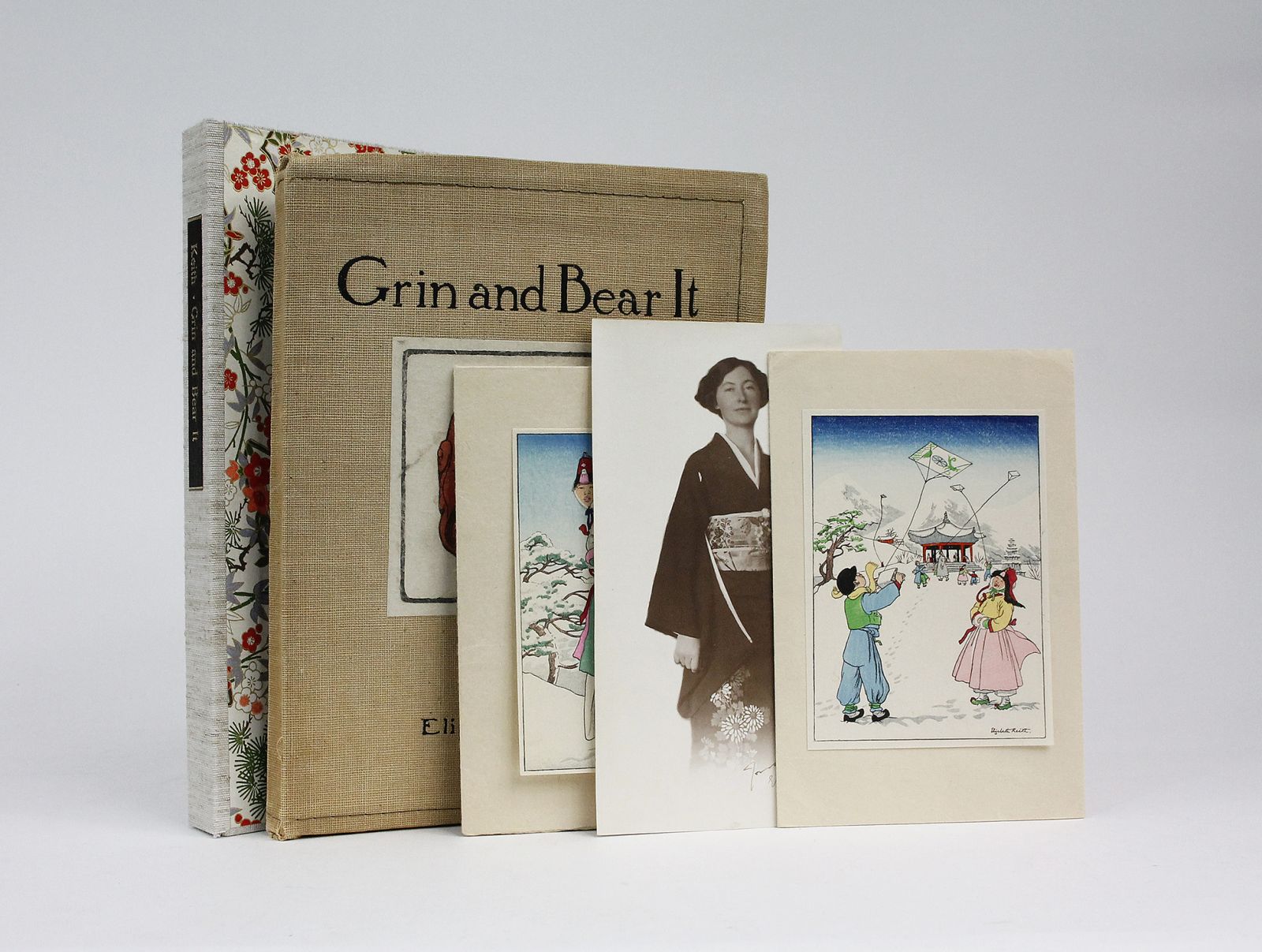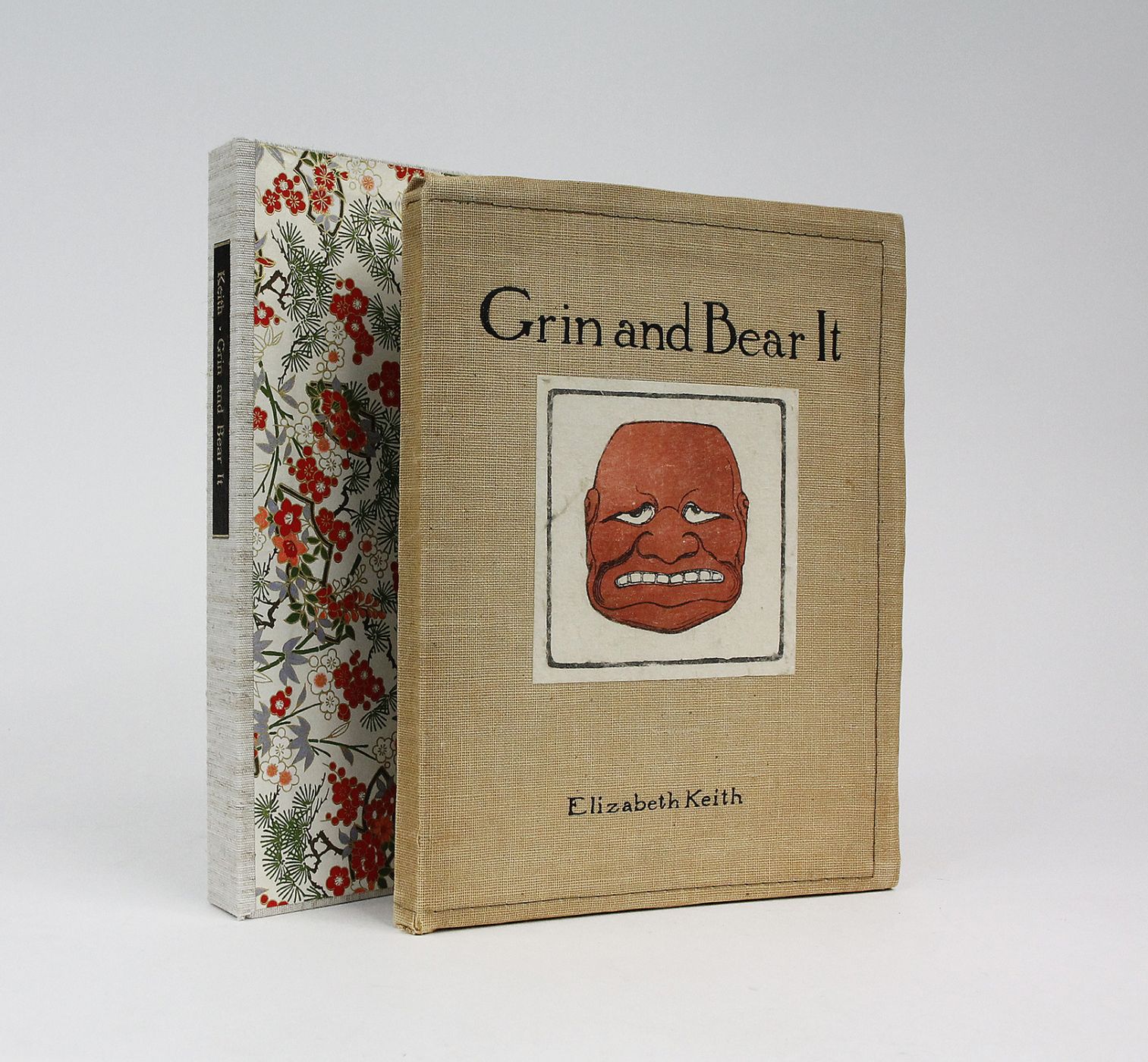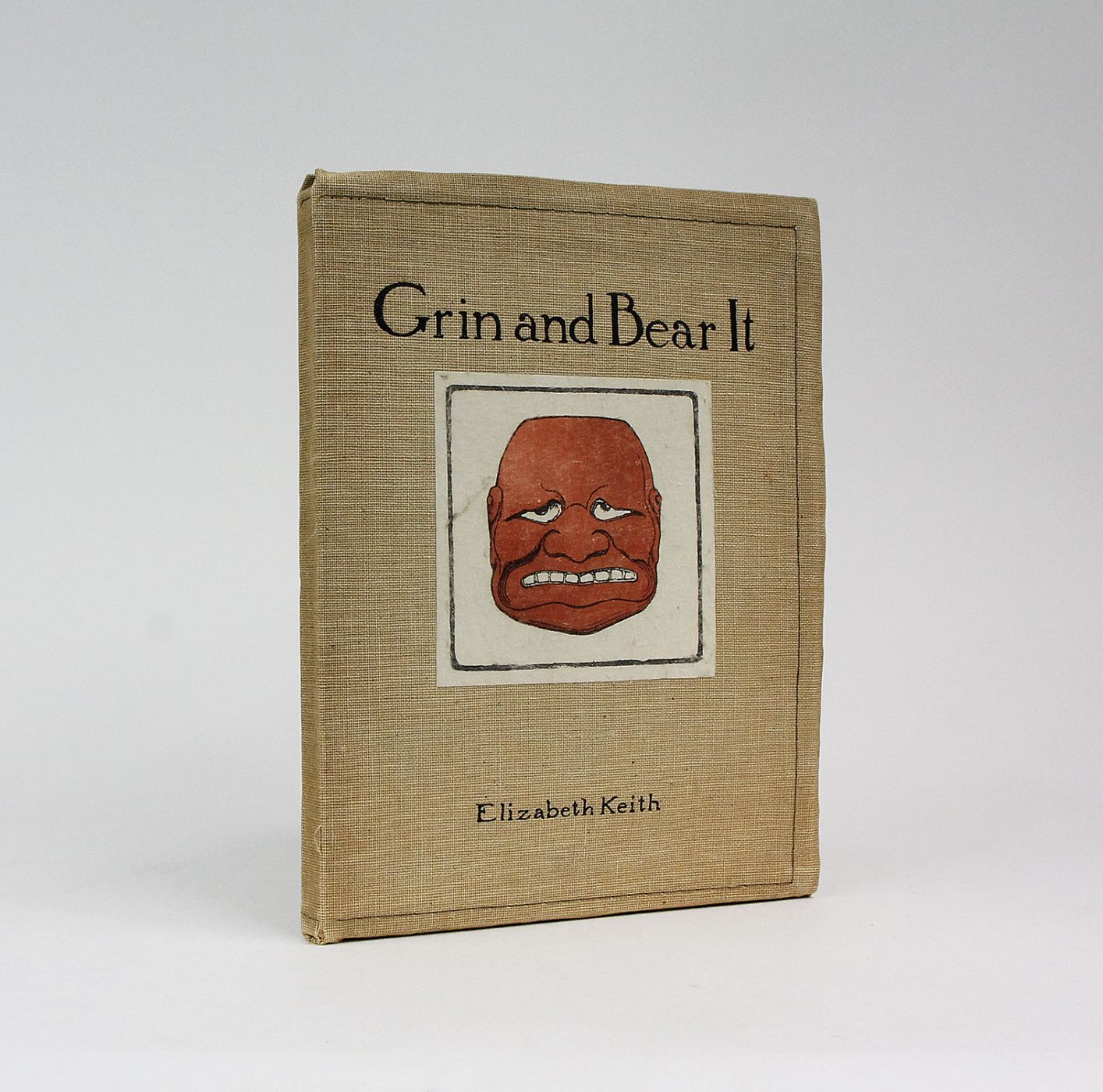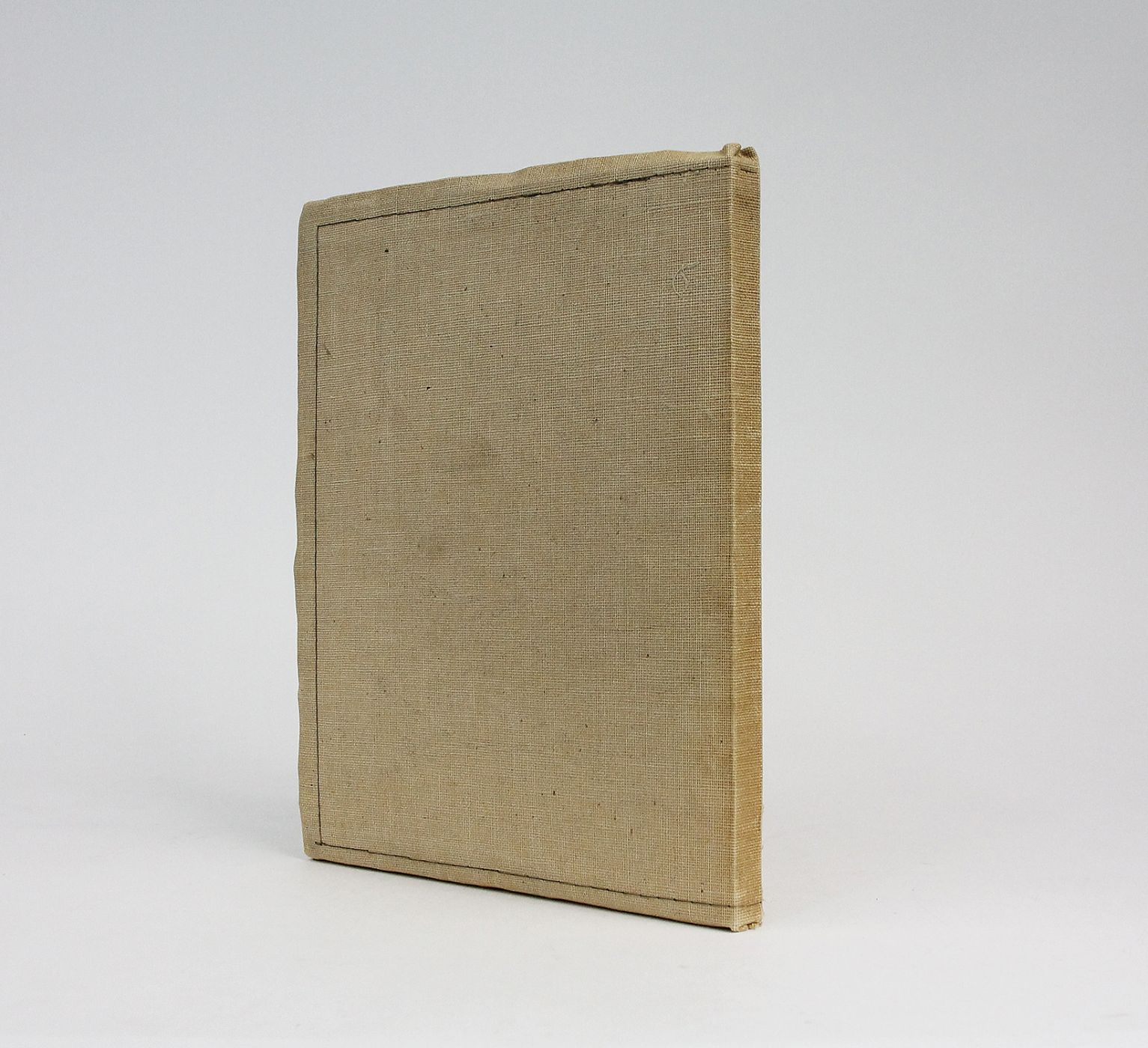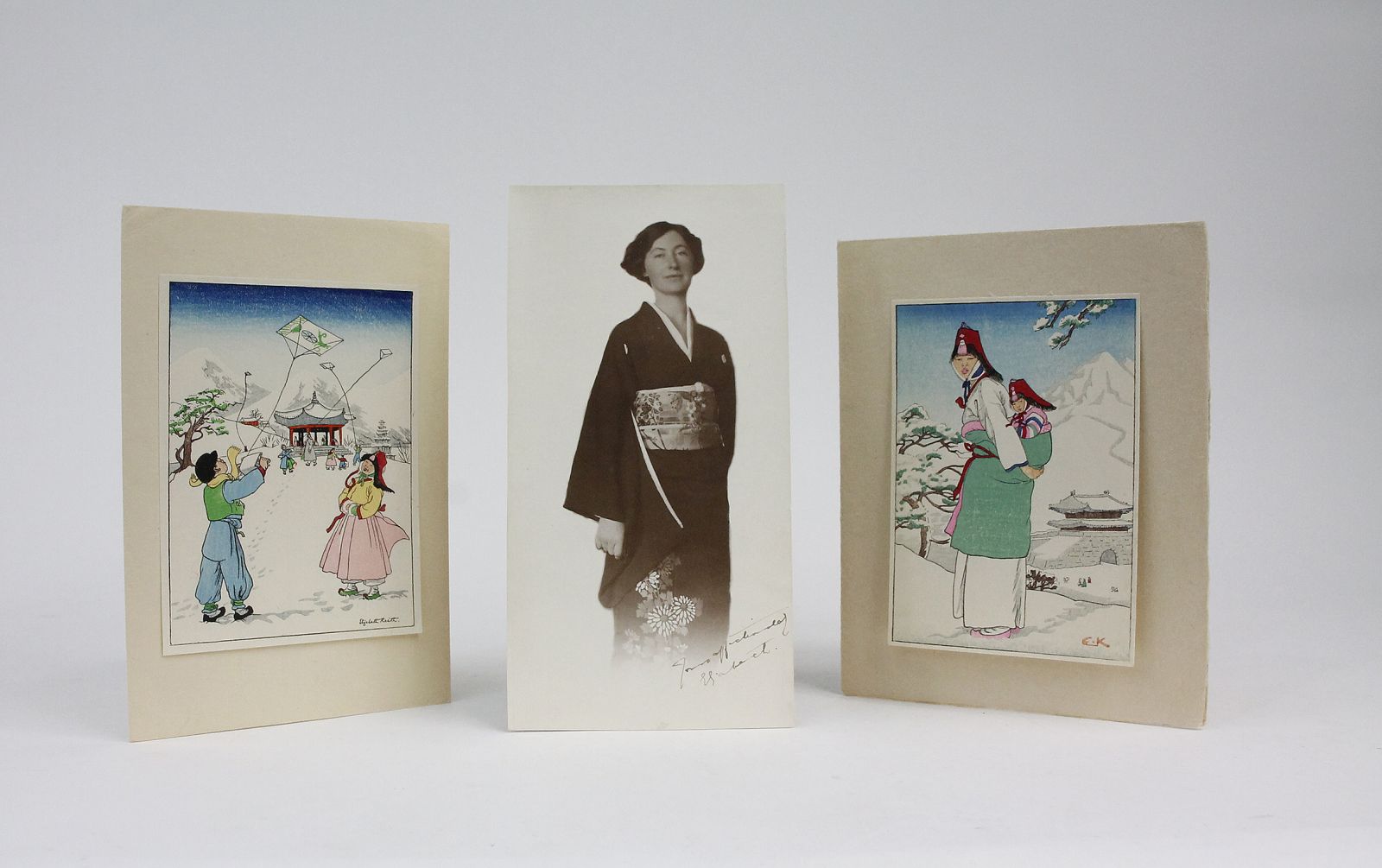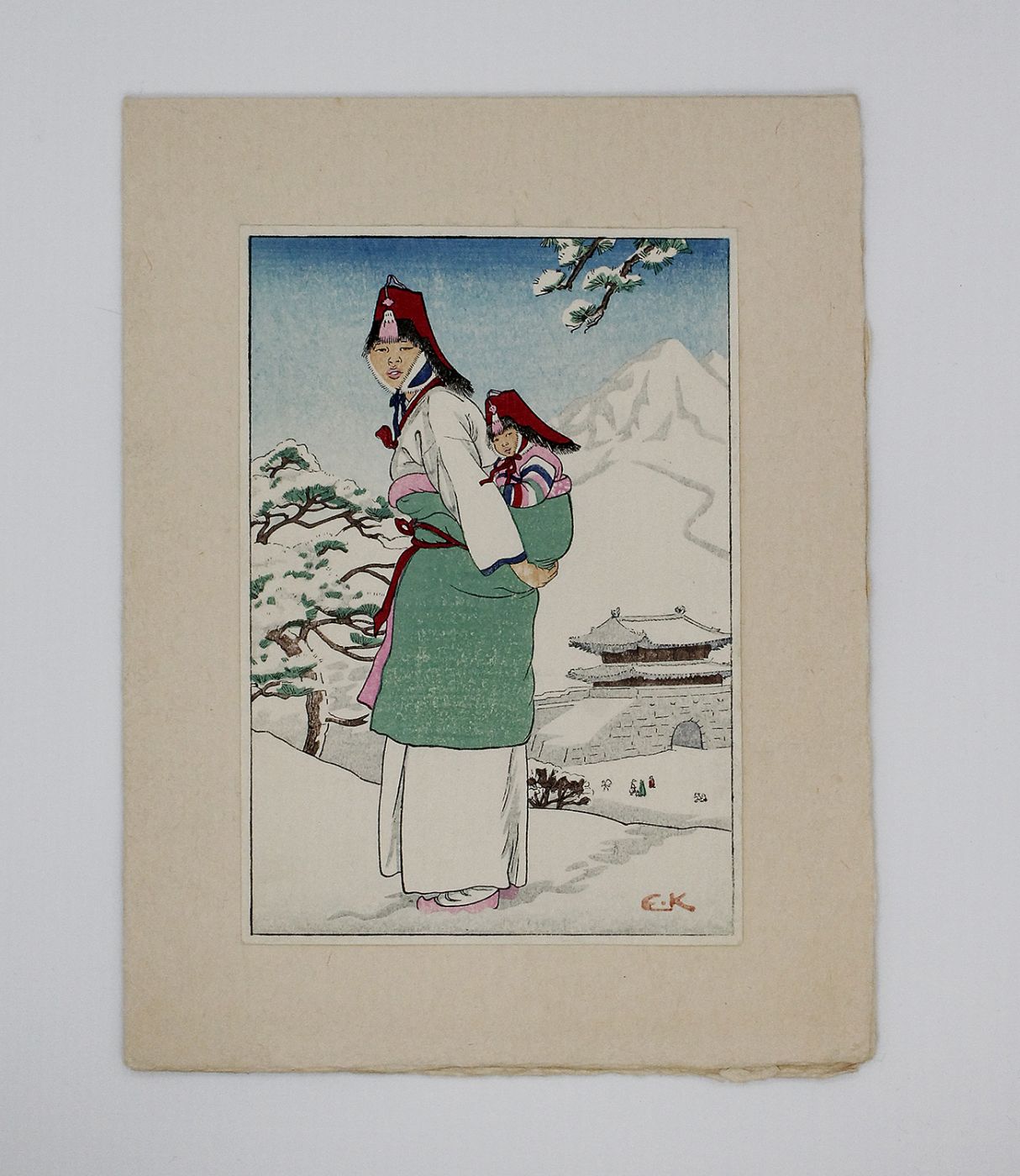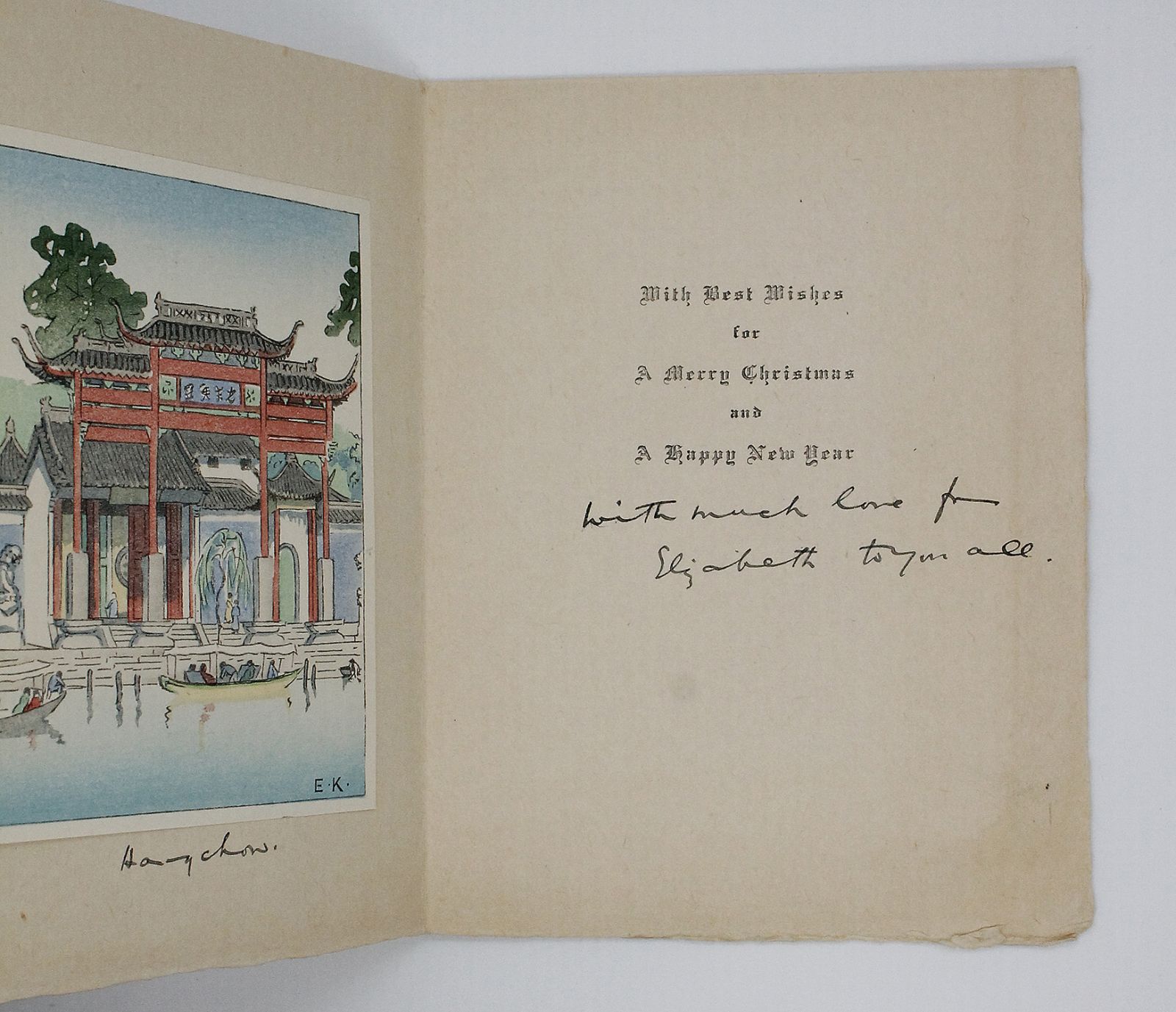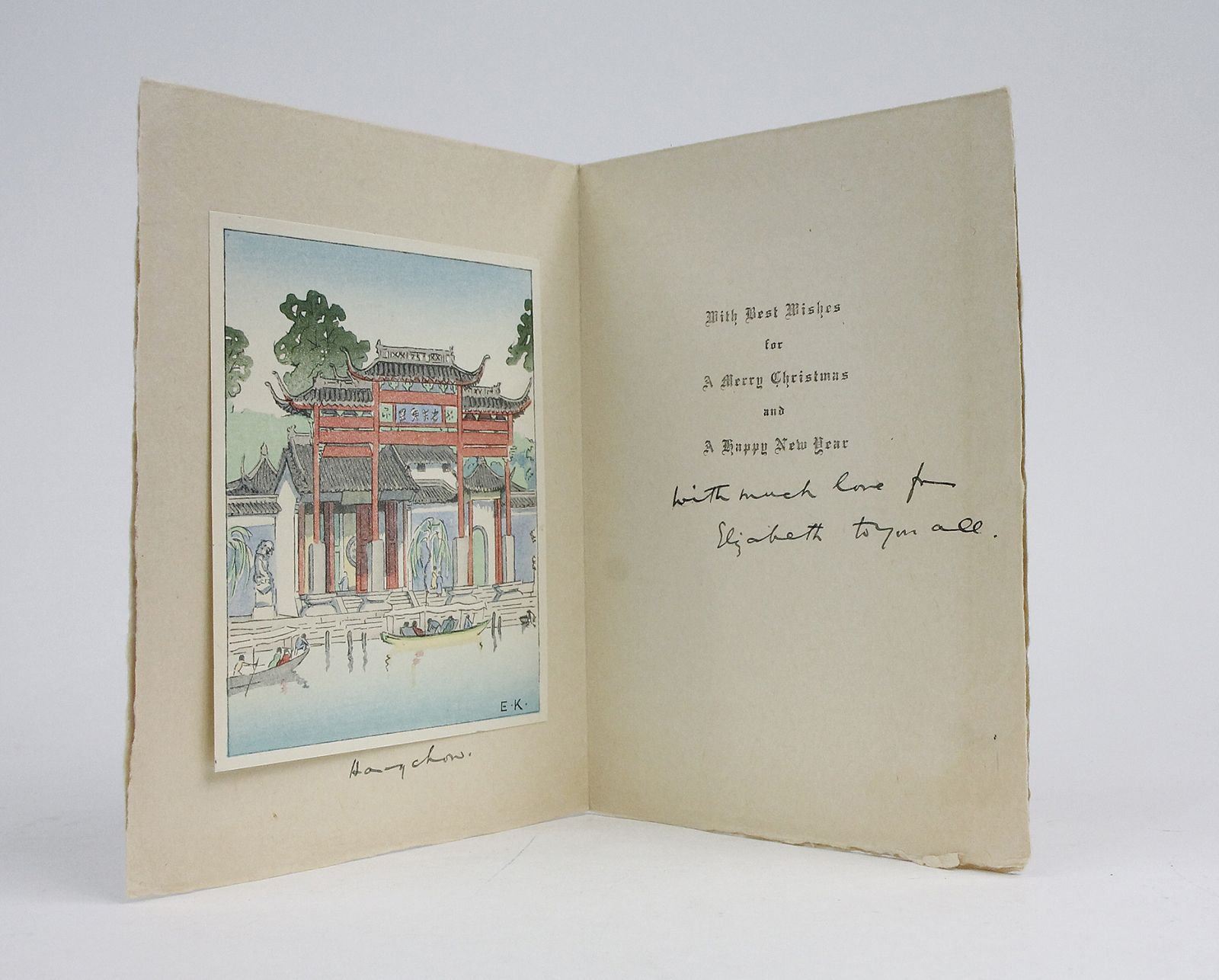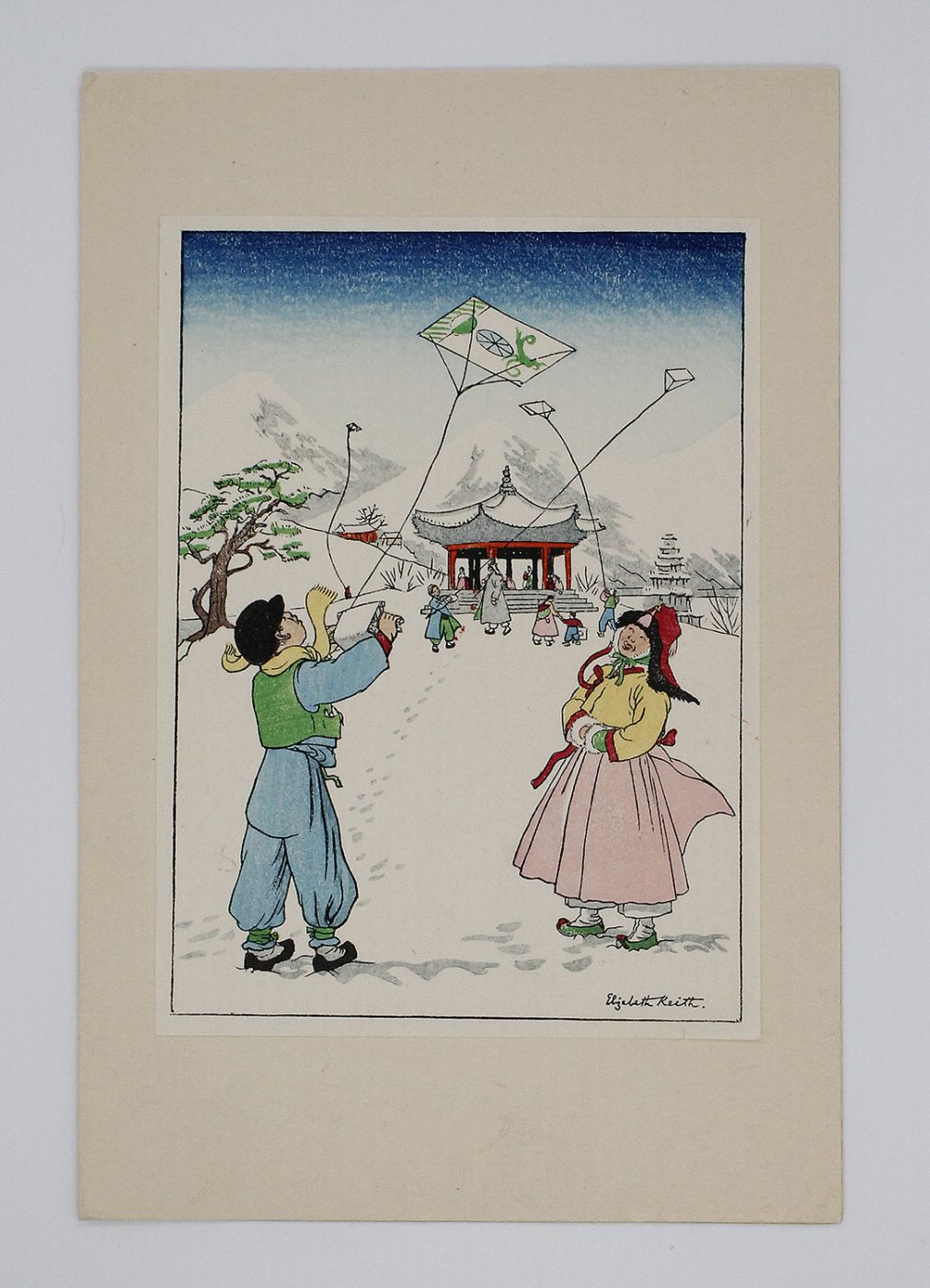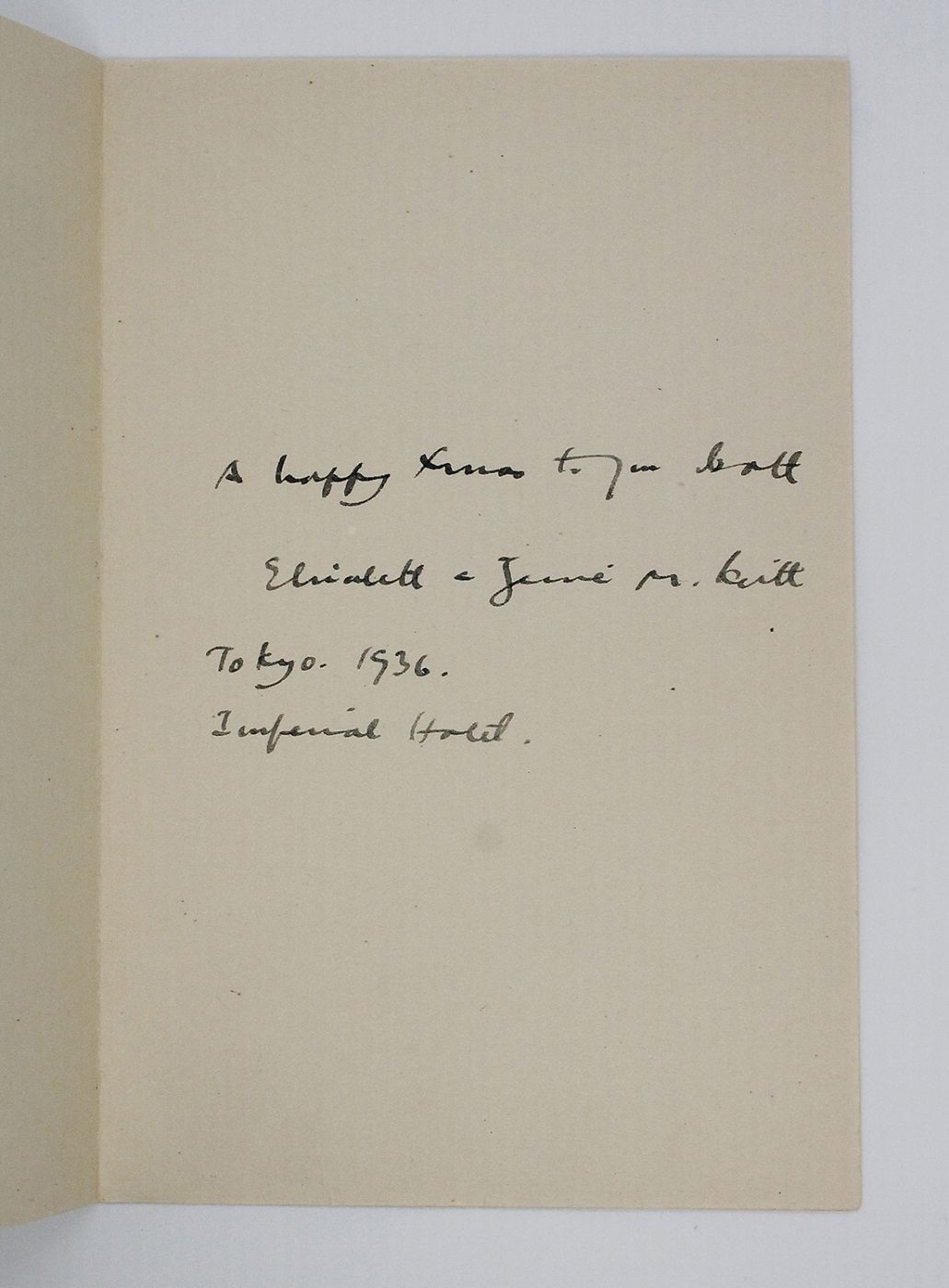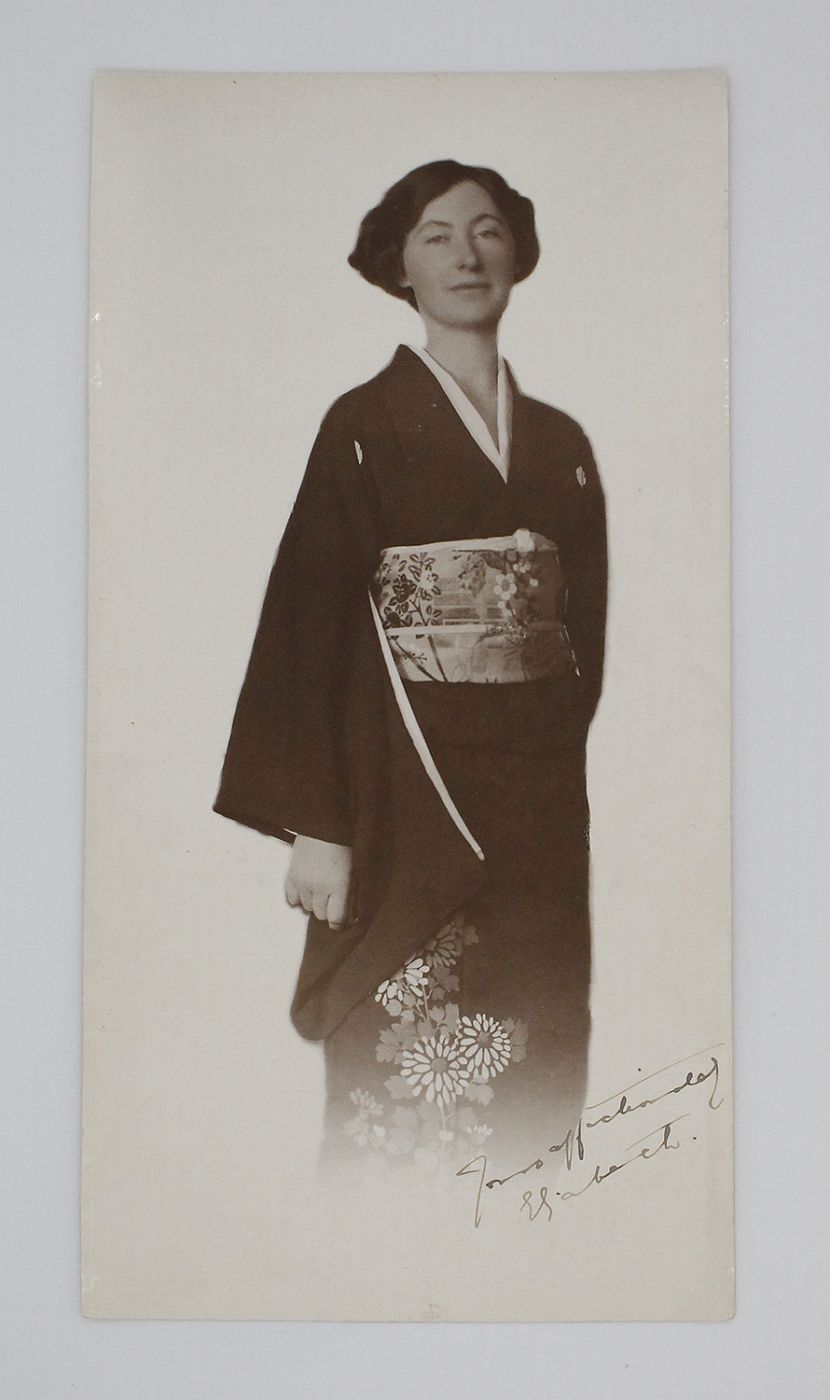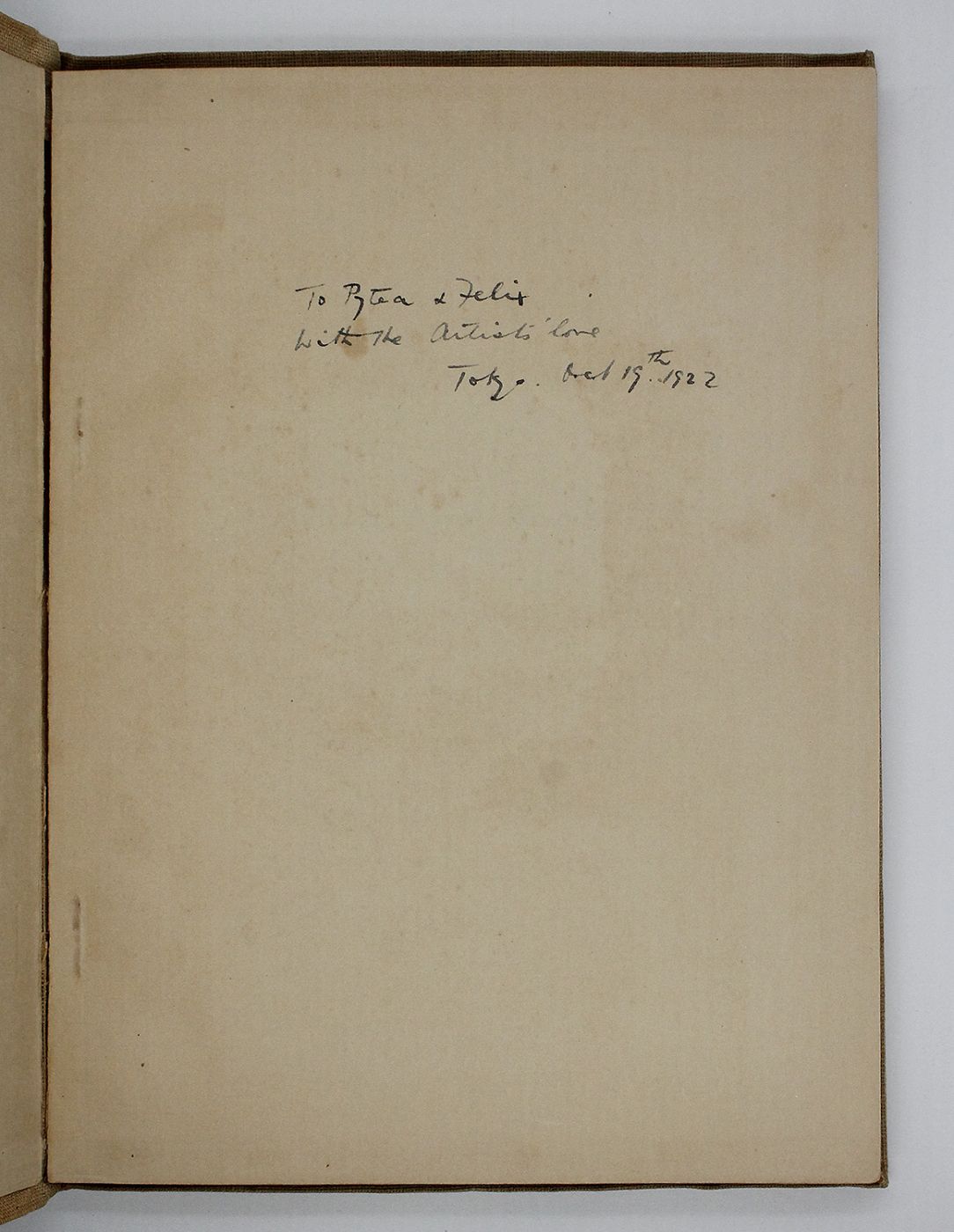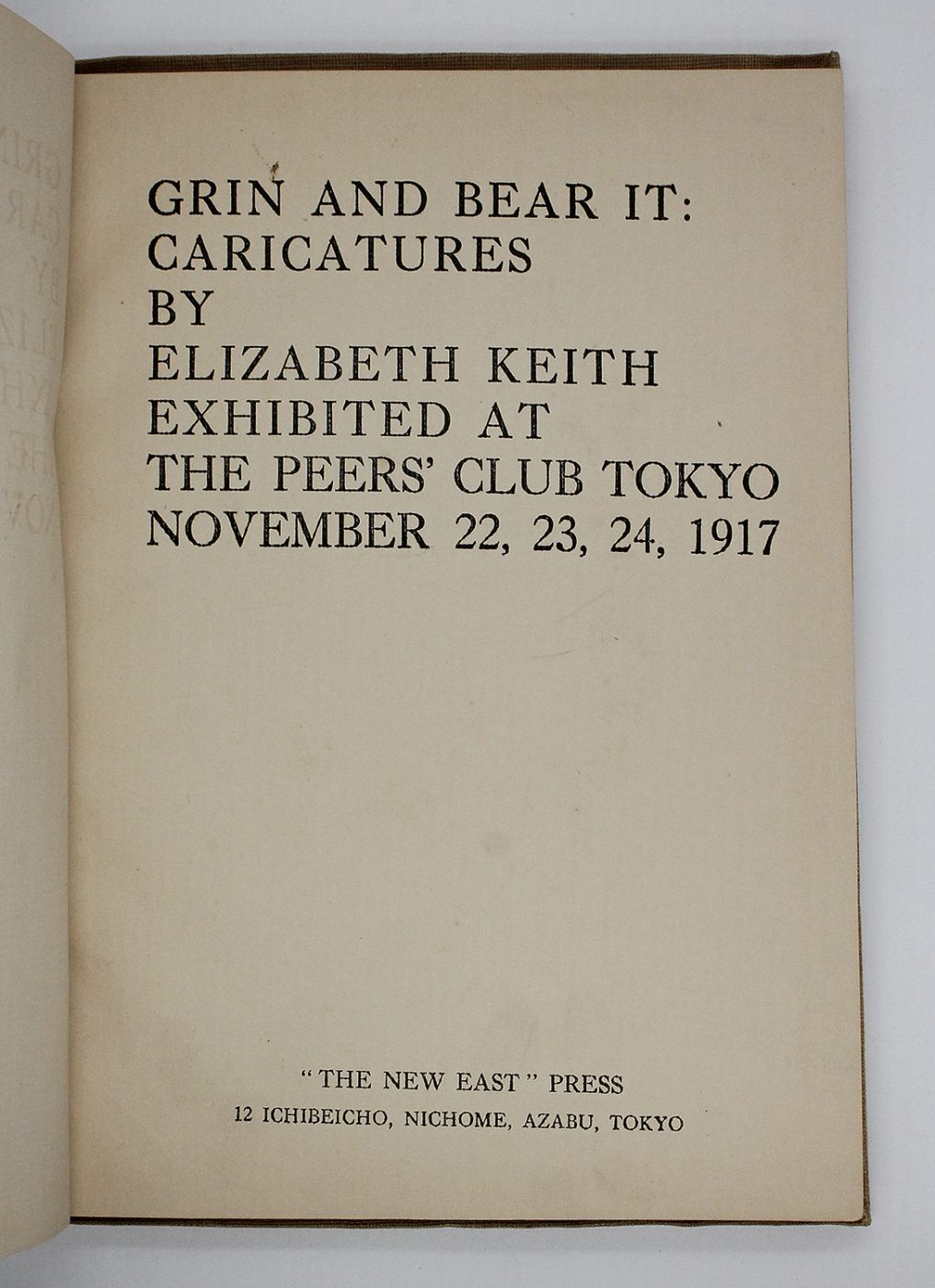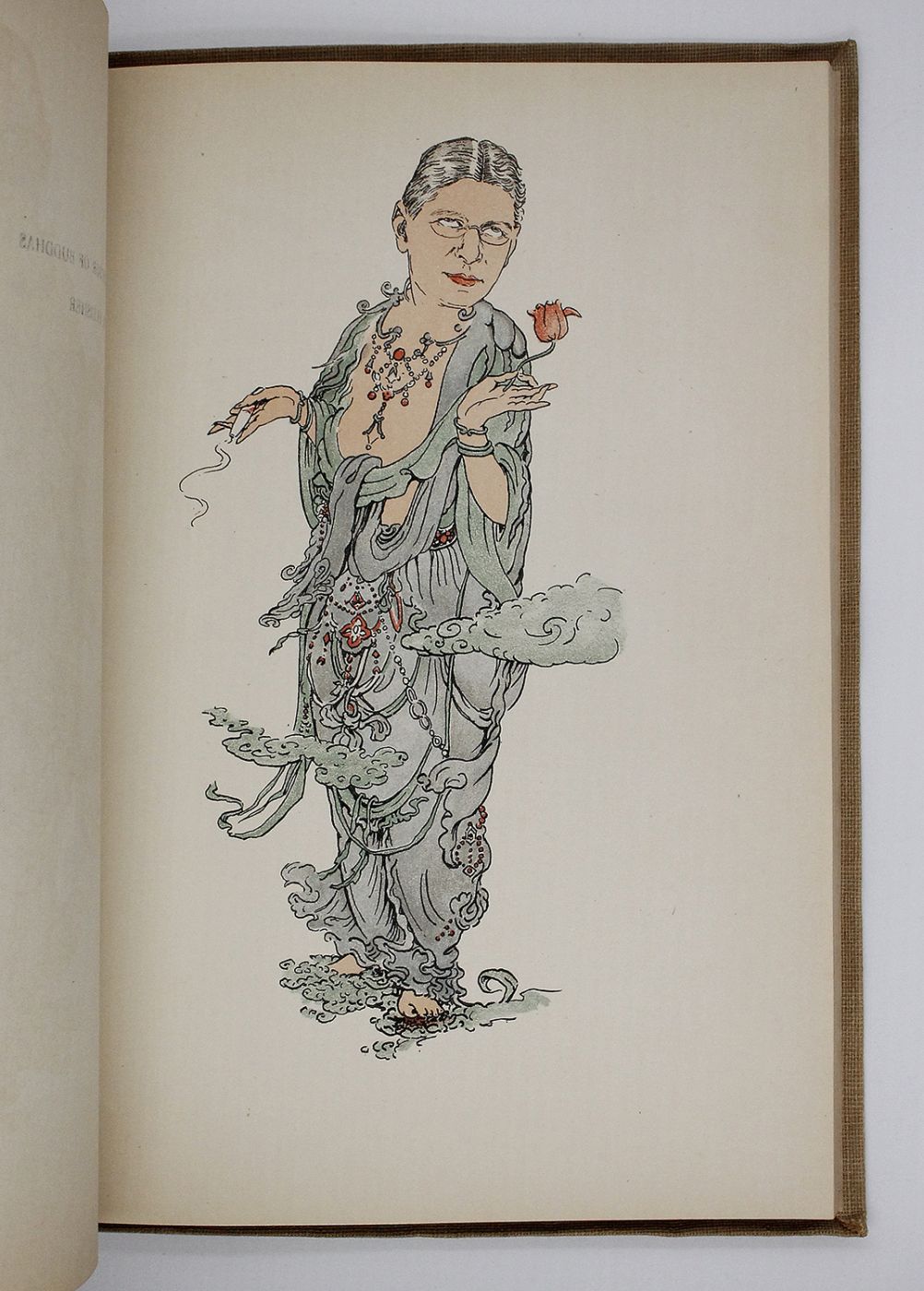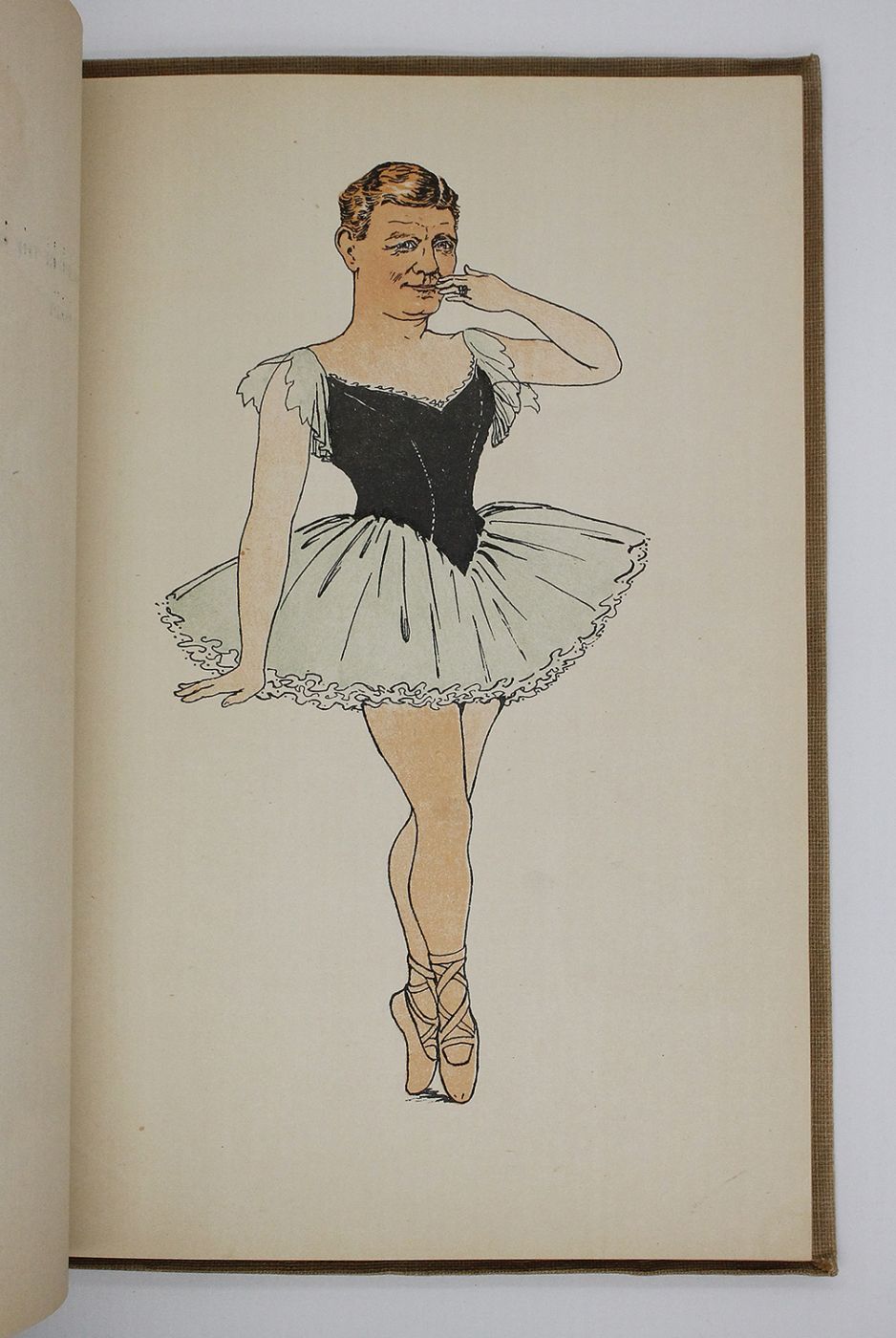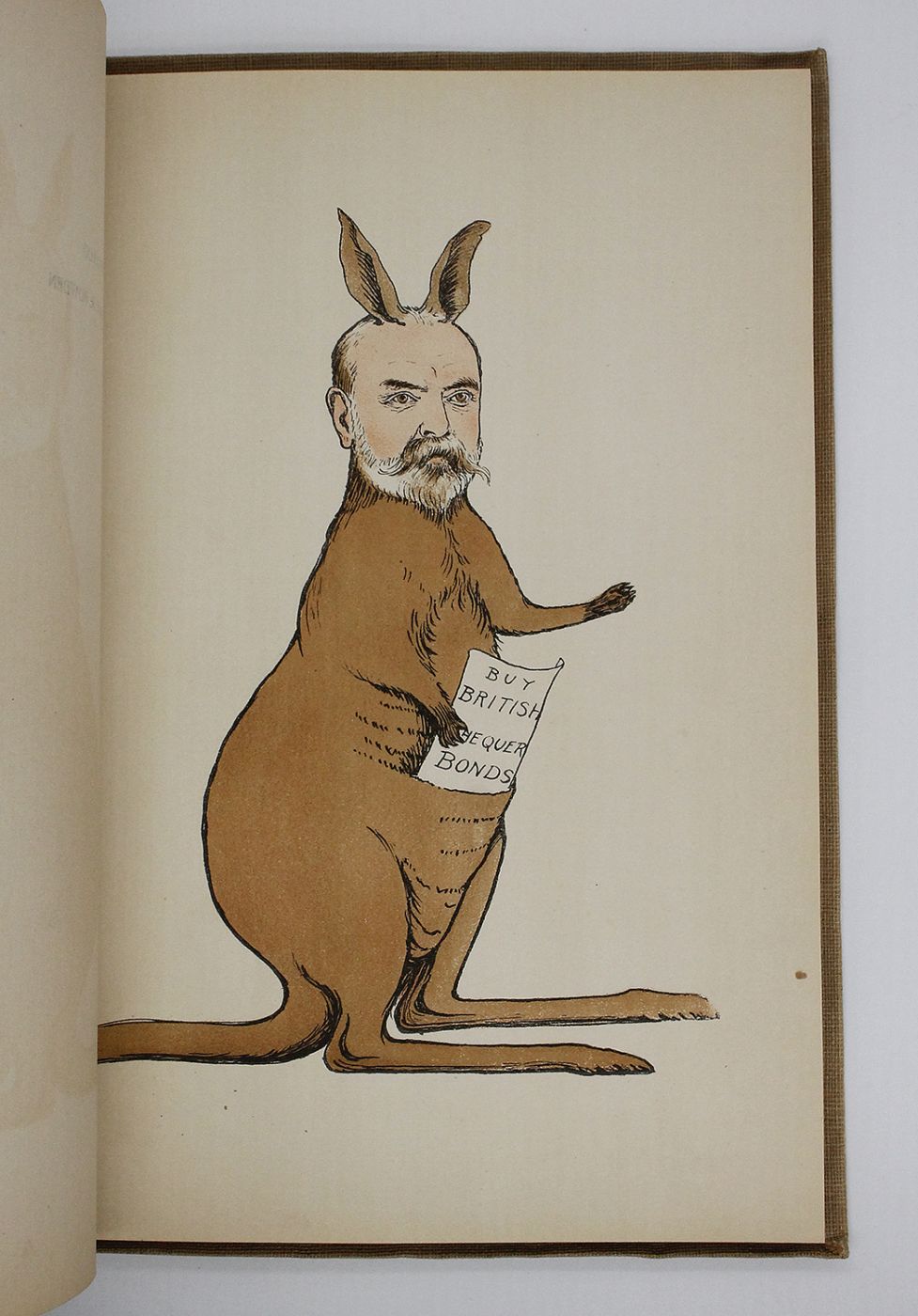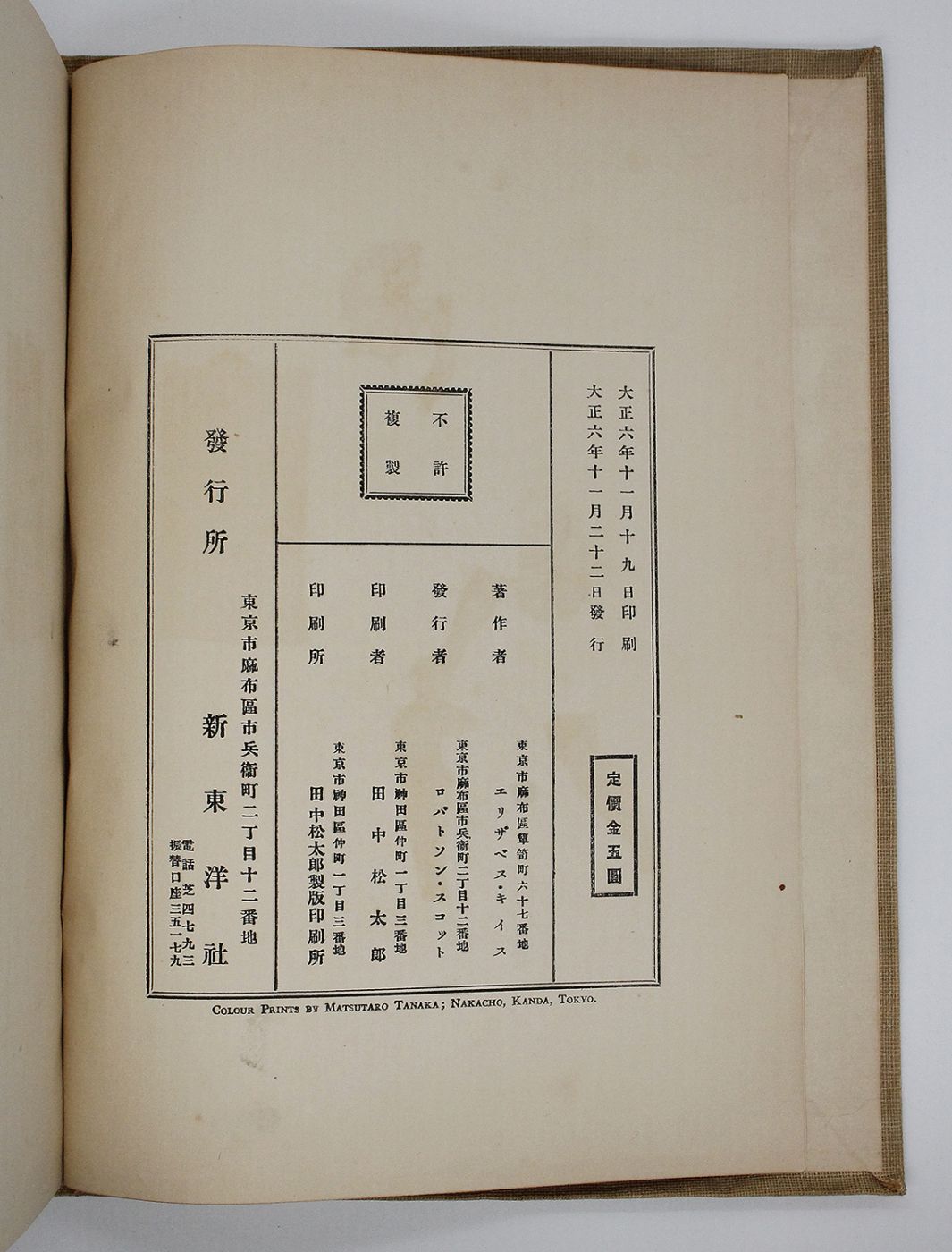GRIN AND BEAR IT; together with TWO INSCRIBED HAND MADE CHRISTMAS CARDS FEATURING THREE ORIGINAL WOODBLOCK PRINTS and a SIGNED PORTRAIT PHOTOGRAPH.
First edition, first printing. Inscribed presentation copy of the Scottish artist, writer and print-maker's first book. Publisher's original yapped cloth covers with titles in black and a woodblock illustration on paper to the upper cover. With sixty-two colour illustrations portraying sardonic caricatures of Tokyo's social luminaries, after watercolour paintings by Elizabeth Keith. An excellent near fine copy, the binding square and firm, the cloth clean and bright with minor wear at the spine tips. The contents are clean throughout and without previous owner's marks. Inner front hinge is cracked but holding. Housed in a bespoke cloth and paper solander case. Very scarce.
Inscribed in black ink on the front endpaper "To Pjtea and Felix / With the artist's love / Tokyo. Oct. 19th 1922". Loosely laid in are two hand-made Christmas cards: the first a single sheet of handmade paper, folded in four with two woodblock prints tipped in (one hand titled in ink "Hang Chow"), stamped "With best wishes / for / A Merry Christmas / and / A Happy New Year" underneath which Keith has inscribed in black ink "With much love from / Elizabeth to you both"; the second card is a single piece of plain card, folded in two with a tipped in woodblock print to the outer cover, inscribed in black ink inside "A happy xmas to you both / Elizabeth + Jessie M. Keith / Tokyo. 1936. / Imperial Hotel". Additionally laid in is black and white portrait photograph inscribed in black ink to the lower right corner "Yours affectionately / Elizabeth" and in pencil (in Japanese) to the reverse. Elizabeth Keith, watercolorist, illustrator, and print-maker, was born in Aberdeenshire on 30 April 1887, moving to London with her family in childhood. Despite a lack of formal art education, she developed into a talented watercolourist. Her first trip to Japan in 1915 was with her sister, Jessie, who married J. W. Robertson Scott, a Tokyo based publisher with the New East Press. Intending it to be a short visit, Elizabeth remained in Asia for nine years travelling in Japan, China, Korea, and the Philippines, drawing inspiration from the landscape, temples, and daily life, sketching constantly. In 1917, the Peer's Club of Tokyo asked Scott to produce a book to raise money for the Red Cross. The result (coinciding with Elizabeth's first exhibition of paintings), was 'Grin and Bear It'. The book [and exhibition] of sixty-two watercolour illustrations portraying sardonic caricatures of Tokyo's social luminaries, whilst infuriating many of the figures represented, gained her significant attention for her artistry. The publisher Sh zabur Watanabe became interested in Elizabeth's work after attending her 1919 exhibition of Korea paintings, collaborating to and produce a woodblock print of "East Gate, Seoul by Moonlight". The partnership would lead to the production and publication of over 100 prints. Although almost all of her prints were executed at Watanabe's traditional shin-hanga workshop, Keith participated in every part of the process and even carved some of her own blocks. She depended upon Watanabe for the production and distribution of her artwork. After leaving Japan in 1924, Elizabeth began mastering the techniques of colour etching and continued to produce prints from sketches she had made in Asia. As a printmaker and watercolourist, she gained an international reputation and exhibited to great acclaim in Britain (Queen Elizabeth, The Queen Mother bought several prints) and the United States. Her last visit to Japan was in 1936 after which exhibitions continued until pre-war tension in Japan forced her to cancel her shows. The market for Asian-influenced art completely deteriorated and by the late 1930s Keith was no longer able to support herself with the sale of her work. Despite the virtual abandonment by collectors and friends, Keith continued painting and making prints of the landscapes and people she loved, and during the war she raised funds for Chinese women affected by Japan's military violence. In 1946, she and Jessie published 'Old Korea: Land of the Morning Calm', a celebration of the country and people who had welcomed them throughout the 1920s and 1930s. The book included criticism of Japan's colonization of Korea before and during the war. Elizabeth Keith exhibited with the Royal Institute of Painters in Watercolour, the Royal Academy, the International Society, and the Royal Society of Artists. Her work is represented in the collections of the Br'tish Museum, London; the Dayton Art Institute, Ohio; the Jordan Schnitzer Museum of Art, University of Oregon, Eugene; the Honolulu Museum of Art, Hawaii; the Metropolitan Museum, New York; the National Gallery of Canada, Ottawa; the Musée Guimet, Paris; the Rhode Island School of Design Museum, Providence; the McNay Art Museum, San Antonio, Texas; and the Fine Arts Museums of San Francisco, California. Her portfolio consists of more than a hundred woodblock prints and about a dozen color etchings. She died in London, England in 1956.
Stock code: 22929
£4,500
Published:
Category
Children's / IllustratedModern First Editions
Original Artwork
Signed / Inscribed
Non-fiction
Gift Ideas
Prints / Posters
Art Books
Fashion
Private Press / Fine Printing
Travel / Exploration


